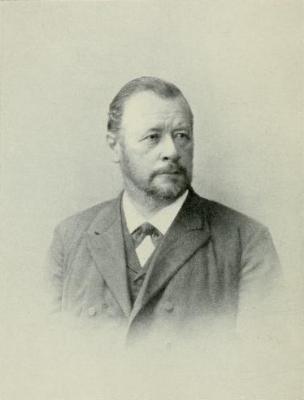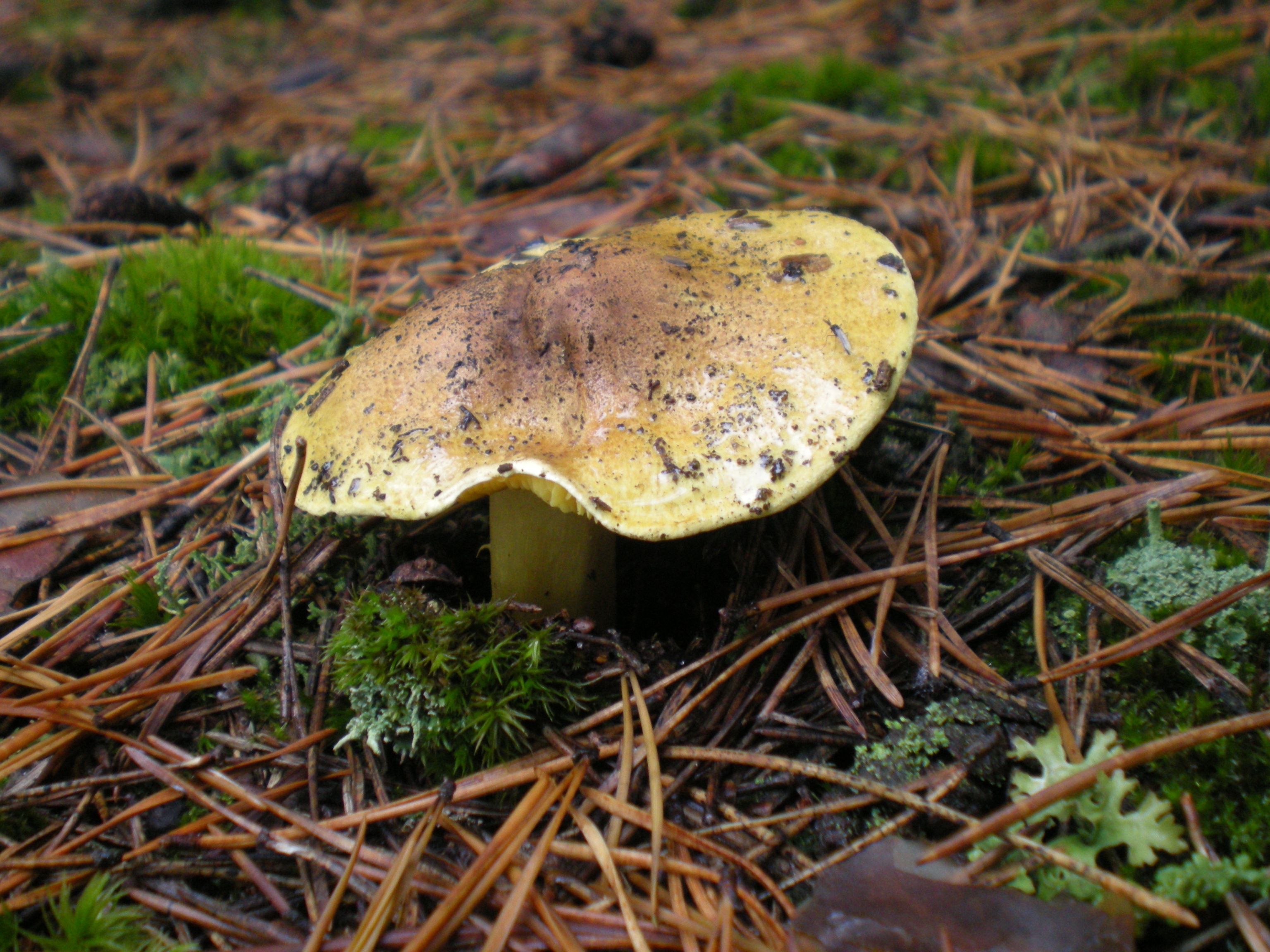|
Tricholoma Fracticum
''Tricholoma fracticum'' is a sturdy mushroom of the agaric genus ''Tricholoma'' with a red-brown cap and a harshly bitter taste. It is mycorrhizal with conifers, primarily of the genus Pinus, and can be found in California. Taxonomy First described as ''Agaricus fracticus'' by German mycologist Max Britzelmayr in 1893, it was transferred to the genus ''Tricholoma'' in 1984 by Hanns Kreisel. Though it has been occasionally listed as a synonym of Tricholoma batschii, a European species, T. fracticum possesses larger spores and 2-spored basidia in contrast with T. batschii's 4-spored basidia, and they are currently considered separate species. Description Tricholoma fracticum is distinguishable with relative ease by noting the combination of a red-brown cap that becomes viscid (slimy) when wet, and a quickly disappearing partial veil that leaves a flimsy ring or sometimes only a delineation in stipe color up towards the gills. No other Tricholoma in California has both of these ... [...More Info...] [...Related Items...] OR: [Wikipedia] [Google] [Baidu] |
Max Britzelmayr
Max Britzelmayr (7 January 1839 – 6 December 1909) was a German mycologist and lichenologist who was a native of Augsburg. He spent his career as a schoolteacher and ''Kreisschulinspektor'' (school district administrator) in Augsburg. He is known for his research of a class of fungi known as Hymenomycetes. He also conducted investigations of lichens native to southern Bavaria, including the Allgäu Alps. (biographical information) List of Publications * ''Dermini und Melanospori aus Südbayern'', (Dermini and Melanspora of southern ); (1883) * ''Hymenomyceten aus Südbayern'', ( |
Fungi Described In 1893
A fungus ( : fungi or funguses) is any member of the group of eukaryotic organisms that includes microorganisms such as yeasts and molds, as well as the more familiar mushrooms. These organisms are classified as a kingdom, separately from the other eukaryotic kingdoms, which by one traditional classification include Plantae, Animalia, Protozoa, and Chromista. A characteristic that places fungi in a different kingdom from plants, bacteria, and some protists is chitin in their cell walls. Fungi, like animals, are heterotrophs; they acquire their food by absorbing dissolved molecules, typically by secreting digestive enzymes into their environment. Fungi do not photosynthesize. Growth is their means of mobility, except for spores (a few of which are flagellated), which may travel through the air or water. Fungi are the principal decomposers in ecological systems. These and other differences place fungi in a single group of related organisms, named the ''Eumycota'' (''true f ... [...More Info...] [...Related Items...] OR: [Wikipedia] [Google] [Baidu] |
MycoBank
MycoBank is an online database, documenting new mycological names and combinations, eventually combined with descriptions and illustrations. It is run by the Westerdijk Fungal Biodiversity Institute in Utrecht. Each novelty, after being screened by nomenclatural experts and found in accordance with the ICN ( International Code of Nomenclature for algae, fungi, and plants), is allocated a unique MycoBank number before the new name has been validly published. This number then can be cited by the naming author in the publication where the new name is being introduced. Only then, this unique number becomes public in the database. By doing so, this system can help solve the problem of knowing which names have been validly published and in which year. MycoBank is linked to other important mycological databases such as ''Index Fungorum'', Life Science Identifiers, Global Biodiversity Information Facility (GBIF) and other databases. MycoBank is one of three nomenclatural repositories r ... [...More Info...] [...Related Items...] OR: [Wikipedia] [Google] [Baidu] |
List Of Tricholoma Species
This is a list of species in the agaric genus ''Tricholoma''. , Index Fungorum lists 379 species in the genus. __NOTOC__ A B C D E F G H I J K L M N O P Q R S T U V U W X Y Z A *'' Tricholoma abietinum'' Velen. 1920 – Europe *''Tricholoma acerbum'' (Bull.) Quél. 1872 *'' Tricholoma acicularum'' Velen. 1947 *'' Tricholoma acutistramineum'' Corner 1994 – Singapore *'' Tricholoma aeruginascens'' Corner 1994 *'' Tricholoma aestivum'' Velen. 1920 – Europe *''Tricholoma aestuans'' (Fr.) Gillet 1874 *'' Tricholoma albatum'' Velen. 1920 – Europe *'' Tricholoma albidulum'' N.Ayala, G.Moreno & Esteve-Rav. 1997 *''Tricholoma albidum'' Bon 1984 *''Tricholoma albobrunneum'' (Pers.) P.Kumm. 1871 *'' Tricholoma alboconicum'' (J.E.Lange) Clémençon 1983 *'' Tricholoma alboluteum'' Velen. 1920 – Europe *''Tricholoma albosquamulatum'' Beeli 1927 * ''Tricholoma album'' (Schaeff.) P.Kumm. 1871 *'' Tricholoma altaicum'' Singer 1943 *''Tricholoma amplum'' ... [...More Info...] [...Related Items...] OR: [Wikipedia] [Google] [Baidu] |
List Of North American Tricholoma
This is a list of ''Tricholoma'' species found in North America. *'' Tricholoma acre'' *''Tricholoma aestuans'' *''Tricholoma albidum'' *''Tricholoma apium'' - scented knight *''Tricholoma argenteum'' *''Tricholoma arvernense'' *''Tricholoma atrodiscum'' *''Tricholoma atrosquamosum'' - dark scaled knight *'' Tricholoma atroviolaceum'' *'' Tricholoma aurantio-olivaceum'' *''Tricholoma aurantium'' - orange knight *''Tricholoma caligatum'' *'' Tricholoma cingulatum'' - girdled knight *'' Tricholoma colossus'' - giant knight *'' Tricholoma davisiae'' *'' Tricholoma dryophilum'' *''Tricholoma equestre'' - yellow knight *'' Tricholoma farinaceum'' *''Tricholoma floridanum'' *'' Tricholoma focale'' - booted knight *''Tricholoma fracticum'' *''Tricholoma fulvimarginatum'' *''Tricholoma fulvum'' - birch knight *''Tricholoma fumosoluteum'' *''Tricholoma griseoviolaceum'' *''Tricholoma hordum'' *''Tricholoma huronense'' *''Tricholoma imbricatum'' - matt knight *''Tricholoma inamoenum'' *''Tri ... [...More Info...] [...Related Items...] OR: [Wikipedia] [Google] [Baidu] |
Tricholoma Aurantium
''Tricholoma aurantium'', commonly known as the golden orange tricholoma, is a mushroom of the agaric genus ''Tricholoma''. Originally described by Jacob Christian Schäffer in 1774, it was transferred to the genus ''Tricholoma'' by Adalbert Ricken in 1915. Description The cap is broadly convex to more or less flat, measuring wide with an margin that is initially rolled inward. Fresh specimens are sticky or slimy. The cap color is orange to dull reddish-orange. Parts that have been handled bruise dark red. The surface texture ranges from smooth to covered with scattered appressed fibrils and scales. The closely spaced gills are whitish, but develop brownish to reddish-brown stains in maturity. They are narrowly attached to the stipe, sometimes by a notch. The often hollow stipe measures long by thick, and is either roughly the same width throughout, or tapers slightly to the base. Its surface is covered with dense orangish scales that terminate in a line near the top of the ... [...More Info...] [...Related Items...] OR: [Wikipedia] [Google] [Baidu] |
Tricholoma Batschii
''Tricholoma batschii'' is a species of fungus belonging to the family Tricholomataceae The Tricholomataceae are a large family of mushrooms within the Agaricales. Originally a classic " wastebasket taxon", the family included any white-, yellow-, or pink-spored genera in the Agaricales not already classified as belonging to e.g. th .... It is found in Europe. References batschii Fungi described in 1969 Fungi of Europe {{Tricholomataceae-stub ... [...More Info...] [...Related Items...] OR: [Wikipedia] [Google] [Baidu] |
Species Description
A species description is a formal description of a newly discovered species, usually in the form of a scientific paper. Its purpose is to give a clear description of a new species of organism and explain how it differs from species that have been described previously or are related. In order for species to be validly described, they need to follow guidelines established over time. Zoological naming requires adherence to the ICZN code, plants, the ICN, viruses ICTV, and so on. The species description often contains photographs or other illustrations of type material along with a note on where they are deposited. The publication in which the species is described gives the new species a formal scientific name. Some 1.9 million species have been identified and described, out of some 8.7 million that may actually exist. Millions more have become extinct throughout the existence of life on Earth. Naming process A name of a new species becomes valid (available in zo ... [...More Info...] [...Related Items...] OR: [Wikipedia] [Google] [Baidu] |
Hanns Kreisel
Hanns Kreisel (16 July 1931 – 18 January 2017) was a German mycologist and professor emeritus. He was born in Leipzig in 1931. Kreisel was a professor at the University of Greifswald. His field was the classification of fungi, where he has studied this group of organisms not only in Germany but in almost all continents, as in Brazil, Seychelles, Vietnam, Cuba and Syria. He had succeeded with his first collaboration to develop a scientifically sound and current fungal flora of Yemen. Kreisel also specialized in the fungal groups of gut fungi. Kreisel was also the editor of several international scientific journals. He died in January 2017 at Wolgast. Eponymous taxa *''Chrysosporium kreiselii'' Dominik 1965 *'' Kreiseliella'' U.Braun 1991 *'' Kreiseliella typhae'' (Vasyag.) U.Braun 1991 *''Meliola kreiseliana'' Schmied. 1989 *''Passalora kreiseliana'' U.Braun & Crous 2002 *''Peziza kreiselii'' G.Hirsch 1992 *''Puccinia kreiselii'' M.Scholler 1996 *''Tulostoma kreiselii ''Tu ... [...More Info...] [...Related Items...] OR: [Wikipedia] [Google] [Baidu] |
Pinus
A pine is any conifer tree or shrub in the genus ''Pinus'' () of the family Pinaceae. ''Pinus'' is the sole genus in the subfamily Pinoideae. The World Flora Online created by the Royal Botanic Gardens, Kew and Missouri Botanical Garden accepts 187 species names of pines as current, together with more synonyms. The American Conifer Society (ACS) and the Royal Horticultural Society accept 121 species. Pines are commonly found in the Northern Hemisphere. ''Pine'' may also refer to the lumber derived from pine trees; it is one of the more extensively used types of lumber. The pine family is the largest conifer family and there are currently 818 named cultivars (or trinomials) recognized by the ACS. Description Pine trees are evergreen, coniferous resinous trees (or, rarely, shrubs) growing tall, with the majority of species reaching tall. The smallest are Siberian dwarf pine and Potosi pinyon, and the tallest is an tall ponderosa pine located in southern Oregon's Rogue Riv ... [...More Info...] [...Related Items...] OR: [Wikipedia] [Google] [Baidu] |
Mycorrhizal
A mycorrhiza (from Greek μύκης ', "fungus", and ῥίζα ', "root"; pl. mycorrhizae, mycorrhiza or mycorrhizas) is a symbiotic association between a fungus and a plant. The term mycorrhiza refers to the role of the fungus in the plant's rhizosphere, its root system. Mycorrhizae play important roles in plant nutrition, soil biology, and soil chemistry. In a mycorrhizal association, the fungus colonizes the host plant's root tissues, either intracellularly as in arbuscular mycorrhizal fungi (AMF or AM), or extracellularly as in ectomycorrhizal fungi. The association is sometimes mutualistic. In particular species or in particular circumstances, mycorrhizae may have a parasitic association with host plants. Definition A mycorrhiza is a symbiotic association between a green plant and a fungus. The plant makes organic molecules such as sugars by photosynthesis and supplies them to the fungus, and the fungus supplies to the plant water and mineral nutrients, such as phos ... [...More Info...] [...Related Items...] OR: [Wikipedia] [Google] [Baidu] |





